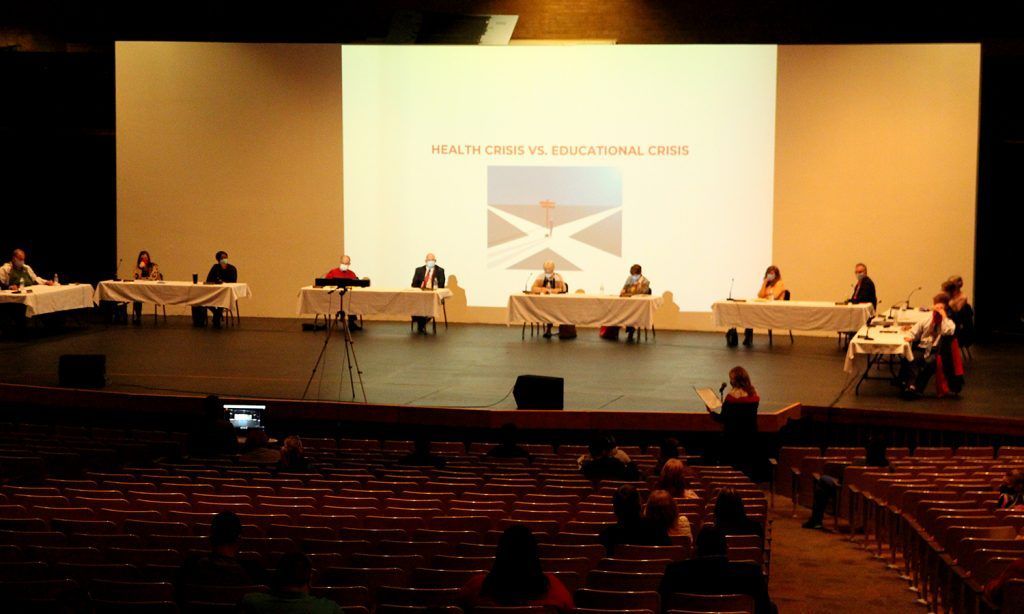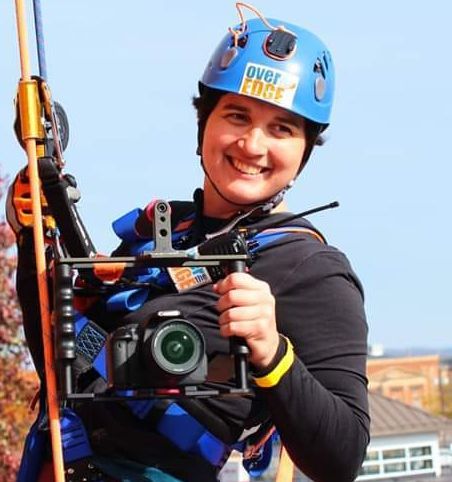
WILLIAMSPORT – Faced with shrinking attendance rates and performance levels well below average, the Williamsport Area School Board voted to eliminate its hybrid model and return to 5 days a week in the classroom.
During a special meeting at the high school Tuesday night, the Williamsport Area School Board voted 7-2 to eliminate the hybrid learning model, but include an option for some families to stay in a remote-learning model for select students who have shown proficiency in the hybrid model.
Dr. Jane Penman presented the motion, which received yes votes from Lori Baer, Patrick Dixon, Jennifer Lake Marc Schefsky, Nancy Story Somers and Adam Welteroth. Star Poole and Barbara Reeves voted no.
The vote is based on a recommendation from Superintendent Dr. Timothy Bowers who advocated for the board to return the district to a 5-day, in-class structure. Elementary school students will return full-time on Nov. 2 and high school students will return on Nov. 9.
This is the second vote on this topic in the past two weeks, overturning a previous vote on Oct. 6. At the previous vote the school board held a 4-4 tie vote failing to pass a motion to leave the hybrid system, despite a survey that showed 65% of parents wanted to return to the 5-day structure.
To address the need for returning to full-time schooling, the district presented a report detailing performance rates of students since the start of the pandemic.
In addition to performance rates dropping, Bowers said he is concerned most by the drastic decrease in attendance.
Among the elementary students, 416 have been reported absent as of Oct. 20 – at the same time last year only 40 absences were reported. In middle school, 270 absences were reported this year, an increase from 35 at the same time last year. And in high school, 507 absences were reported, with only 42 reported at the same time last year.
The report showed that student social services are following up with over 1,190 students who have missed more than 3 unexcused days of school.
According to the report, 2,932 high school students are in academic failure as of Oct. 20. At the end of the 2019/20 year, there were 594 course failures.
Here is a list of the high school interim student progress reports of hybrid and remote students:
- Course Failures: 2,968 course failures out of a total 9,181 courses (32%)
- Track A Hybrid: 874 course failures out of 3,533 courses (25%)
- Track B Hybrid: 889 course failures out of 3,279 courses (27%)
- Track C – Full Remote: 1,203 course failures out of 2,206 (55%)
Here is a list of the middle school interim student progress reports of hybrid and remote students:
- Course Failures: 1,004 course failures out of 3,199 courses (31%)
- Track A Hybrid: 234 course failures out of 1,007 courses (23%)
- Track B Hybrid: 293 course failures out of 1,190 courses (25%)
- Track C Remote: 454 course failures out of 892 courses (51%)
Among elementary students, reading proficiency has decreased in each grade (Kindergarten to Grade 3), but Grade 1 has seen the highest decrease with 69% not meeting the literacy benchmark – a loss of 33% from the previous year, according to the report.
Bowers attributed much of the learning curve to students who have abruptly been asked to use the school-supplied Chromebook for their classes and homework, a style of learning they have never used before. While he said that if the district stayed with the hybrid model it is possible to flatten that curve, he added he is more worried about the students lost along the way.
“My concern … is that we will loose too many kids along the way,” Bowers said. “That data doesn’t lie. Where is the learning if they can’t connect with us?”
Parents on both sides of the issue came out in force during the special meeting Tuesday night. While some called for help from the district as their kids continue to struggle with a hybrid or remote model, other parents contradicted those concerns saying their kids were excelling in a hybrid model.
Proponents for a hybrid system said it is up to the parents to ensure their kids participate in classes and should not rely on the school district to require it.
“My children are excelling,” said Sarah Crossley. “She (her daughter) meets with her teacher (virtually) … I’m getting better as a parent at just checking in with her. She’s doing wonderfully.”
But other parents, like Christopher Helmrich, believe the hybrid model isn’t working.
He said his kids have issues with depression and anxiety with the current system.
“They get frustrated and then they get disinterested.” Helmrick said “If we work together we can put the procedures and protocols together and we can get it done.”
For parents like Peter Swift with two kids in the elementary school, the education gap is very concerning.
“The difference between the top performers and the bottom ones isn’t just increasing, it is as if they’re in different classes altogether,” Swift said. “And unfortunately, much of this is environmental. Not all families are equipped to be the educational support system for their children.”
Welteroth, who supported returning to a 5-day in-class schedule, said continuing to keep kids out of the classroom will have lasting effects on their development for years to come.
“These kids need to be in school,” Welteroth said. “For some of these kids, school is their only safe place. Those kids get lost in the mix.”
“It’s clear looking at the data … that our absenteeism is out of control and our kids are not meeting the academic standards that they need to,” he added.
Until now, Williamsport was the only school district that had elected to stay in a hybrid learning system. Montoursville Area School District has briefly returned to a hybrid model following a few positive COVID-19 cases, but anticipates allowing students to return on Nov. 3.





Great coverage, Anne.